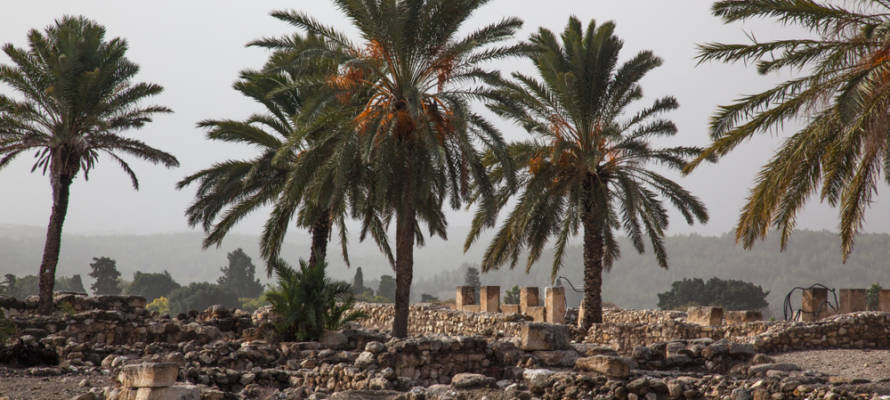Israeli scientists are growing dates from ancient seeds, seeking breakthroughs in medicine and discoveries related to seed preservation.
By United with Israel Staff
A team of scientists from Israel, France, Switzerland and United Arab Emirates are successfully growing six ancient date palm seeds, out of 34 attempted germinations. This brings a total of seven ancient date palm seeds growing for scientific study.
Their research could lead to insights about seed longevity, morphometric studies, the medicinal qualities of this ancient food and migratory patterns. The research was published in Science Advances on Wednesday.
Israeli team members consist of Sarah Sallon, Elaine Solowey, and Nathalie Chabrillange.
Hundreds of ancient date seeds were found from digs at the archaeological sites of Masada, Qumran, Wadi Makukh, and Wadi Kelt, located in the Judean desert, between 1963 and 1991. However, these few seeds were the most intact for germination.
The growing seeds are named after biblical figures, Adam, Jonah, Uriel, Boaz, Judith and Hannah. They were planted in a quarantined site at the Arava Institute for Environmental Studies in Kibbutz Ketura in southern Israel.
In 2005, Dr. Elaine Solowey sprouted a male date seed, in the same location, found during Masada excavations in the mid-1960s. It is named after the biblical figure Methusalah.
Genetic tests of Methusalah show that it is closely related to an ancient date variety from Egypt, implying that it came into the Holy Land with the Israelites during their exodus from the country, Solowey said.
Methuselah, Adam and Hannah date back to the first to fourth centuries BCE. Judith and Boaz date back to approximately mid-second century BCE. Uriel and Jonah date back to the first to second centuries CE.
Historic Importance of Dates
Dates historically carry importance, not only in Judaism but also in Islam and Christianity. Their “findings suggest that Judean date culture was influenced by a variety of migratory, economic, and cultural exchanges that took place in this area over several millennia.”
Dates are one of the earliest domesticated tree crops. Archaeobotanical records indicate that dates were consumed thousands of years ago in the Arabian Neolithic period
Judean dates were historically grown around the areas of Jericho, the Dead Sea and the Jordan Valley. They were known for “their large size, sweet taste, extended storage, and medicinal properties,” according to the study.
“The Kingdom of Judah (Judea) that arose in the southern part of the historic Land of Israel in the 11th century BCE was particularly renowned for the quality and quantity of its dates.” However, by the 19th century, all of the Holy Land’s date plantations had been destroyed to to various conquests.
The Science Behind the Seeds
Though little is known about the mechanisms that protect seed viability, scientists hypothesize that low precipitation and very low humidity in Israel’s southern region were contributing factors to the longevity of these ancient seeds. Additionally, the Dead Sea region is the lowest point below sea level in the world, with a “unique radiation regime and a complex haze layer,” according to the study.
The team measured and documented details of each seed. They found that the ancient date seeds were about 30 percent longer and wider than modern seeds. Some of the ancient seeds took a mere few weeks to sprout while others took six months.
They also discovered that the dates consisted of “two highly differentiated gene pools: an eastern population, consisting of cultivars extending from the Middle East and Arabian Peninsula to northwest India and Pakistan and a western population covering North Africa and sub-Saharan Africa.”
Given that the researchers now have both male and female plants, needed for propagation, they hope to establish an orchard of ancient dates. This could lead to breakthroughs in medicine as well as knowledge for seed preservation.
